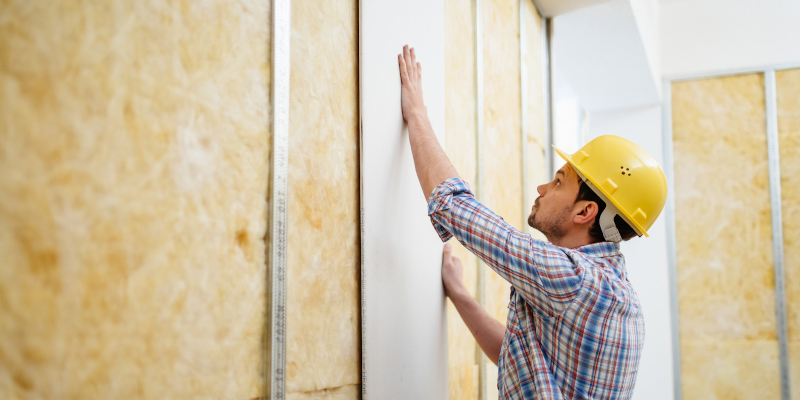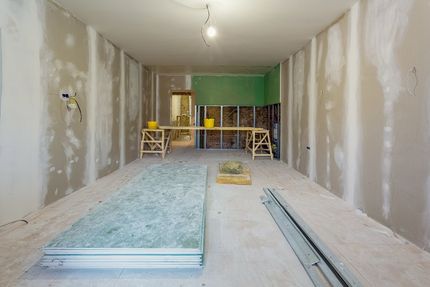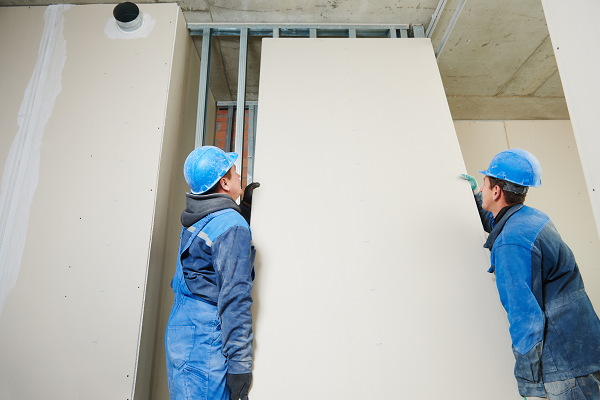Full Overview to Effective and Reputable Drywall Installment
Drywall installment is an important element of any building or improvement task, requiring a thorough approach to make certain both performance and dependability. Understanding the essential devices and techniques is paramount, along with recognizing usual pitfalls that can lead to substandard results. By carefully preparing the area and executing ideal techniques, one can attain a perfect finish that stands the examination of time. It is vital to check out the nuances of each step in the procedure, as they collectively add to the overall success of the drywall setup. What particular strategies can raise your method?
Essential Tools for Drywalling
When starting a drywall installation project, having the right devices is crucial for accomplishing a specialist finish. Vital tools consist of a drywall blade, tape procedure, and a T-square, which are basic for accurate measurements and smooth cuts. A drywall lift is also extremely beneficial, particularly for ceiling installments, enabling much easier handling of heavy panels.
For securing the drywall, a cordless drill and drywall screws are needed. The drill needs to be equipped with a drywall bit to ensure effectiveness and accuracy. In addition, a vital device is the drywall saw, which assists in cutting around other barriers and electrical outlets.

Additionally, safety gear such as safety and security glasses and a dirt mask are vital to make certain individual security throughout the setup process. Utilizing the right devices not just boosts the top quality of the setup however also streamlines the operations, making the job a lot more efficient overall.
Preparing the Room

Following, evaluate the problem of the ceilings and wall surfaces. Fix any type of existing damage, such as holes, splits, or peeling paint, to make certain a smooth and also surface for drywall application. Furthermore, check for electrical outlets, pipes lines, and HVAC air ducts, marking their places to stay clear of problems throughout setup.
It is also vital to measure the space properly, determining the dimensions of the ceilings and walls to compute the appropriate amount of drywall required. Develop a thorough plan that includes the format and orientation of the drywall panels.
Installation Methods
Efficient setup strategies are essential for achieving a professional finish in drywall jobs. Correct dimension and cutting of drywall sheets are fundamental steps.
When hanging drywall, begin with the leading and job downward, guaranteeing that the lengthy side of the board is vertical to the framing. Safeguard the sheets with screws instead than nails, which offer better holding power and minimize the threat of standing out. Location screws every 12 inches along the sides and every 16 inches in the field of the board.
For corners, utilize edge beads to accomplish sharp, clean edges. When mounting on ceilings, use a drywall lift or have a partner assist in holding the sheets in place (drywall repair). Preserve a gap of about 1/4 inch above the floor and ceiling to suit development and tightening
Completing Touches

Begin by applying joint tape over the joints. This can be either paper or fiberglass harmonize tape, with paper being chosen for its sturdiness. Once the tape is in place, it's time to use the very first coat of joint substance, also recognized as mud. Use a 10 to 12-inch taping blade to spread the substance uniformly over the taped joints, feathering the edges to mix with the bordering drywall.
Enable the compound to dry extensively, normally 1 day. After drying, sand the page surface area lightly with fine-grit sandpaper to get rid of any kind of flaws. drywall installation. Repeat the mudding and sanding procedure, typically 2 to 3 coats, making sure each layer is smooth and flush with the drywall surface area
Common Errors to Stay Clear Of
Numerous DIY enthusiasts run into mistakes throughout drywall installment that can compromise the results. One usual blunder is failing to appropriately cut and measure drywall sheets. Unreliable cuts can bring about gaps and uneven seams, making completing extra labor-intensive. Furthermore, disregarding to stagger joints can create powerlessness in the wall, leading to possible cracking or sagging gradually.
Another regular error is improper fastening. Using also couple of screws or nails can lead to loose drywall, while overdriving fasteners can cause the paper to tear, weakening the framework. It's critical to keep consistent spacing, generally every 16 inches, and to guarantee that fasteners are flush with the surface area.
In addition, not attending to wetness concerns prior to setup can result in mold and mildew development and structural damage. Constantly analyze the setting and usage moisture-resistant drywall in high-humidity areas.
Verdict
Reputable and efficient drywall setup requires careful attention to information throughout the process. By making use of vital devices, preparing the area adequately, and sticking to ideal methods in installment techniques, a remarkable finish can be accomplished. In addition, mindful application of joint compound and tape throughout the finishing phase my review here improves resilience and look. Avoiding usual mistakes even more adds to a professional result, highlighting the importance of accuracy and technique in successful drywall jobs.
It is crucial to explore the subtleties of each step in the process, as they collectively contribute to the general success of the drywall setup.When beginning on a drywall installment project, having the right tools is important for accomplishing an expert surface.For securing the drywall, a cordless drill and drywall screws are needed.Appropriately preparing the room is crucial for an effective drywall installment.Reliable setup methods are important for achieving a specialist coating in drywall tasks.